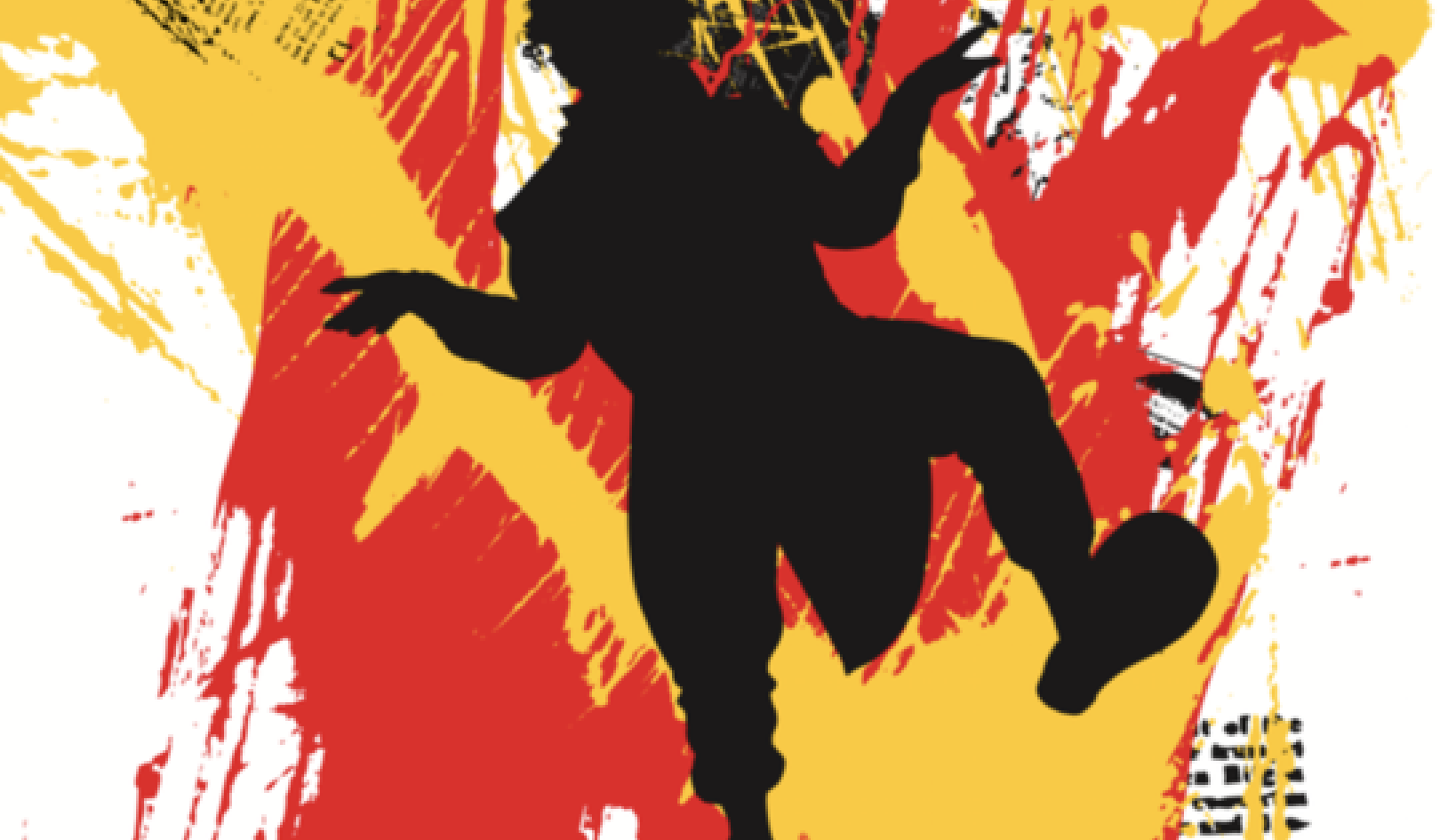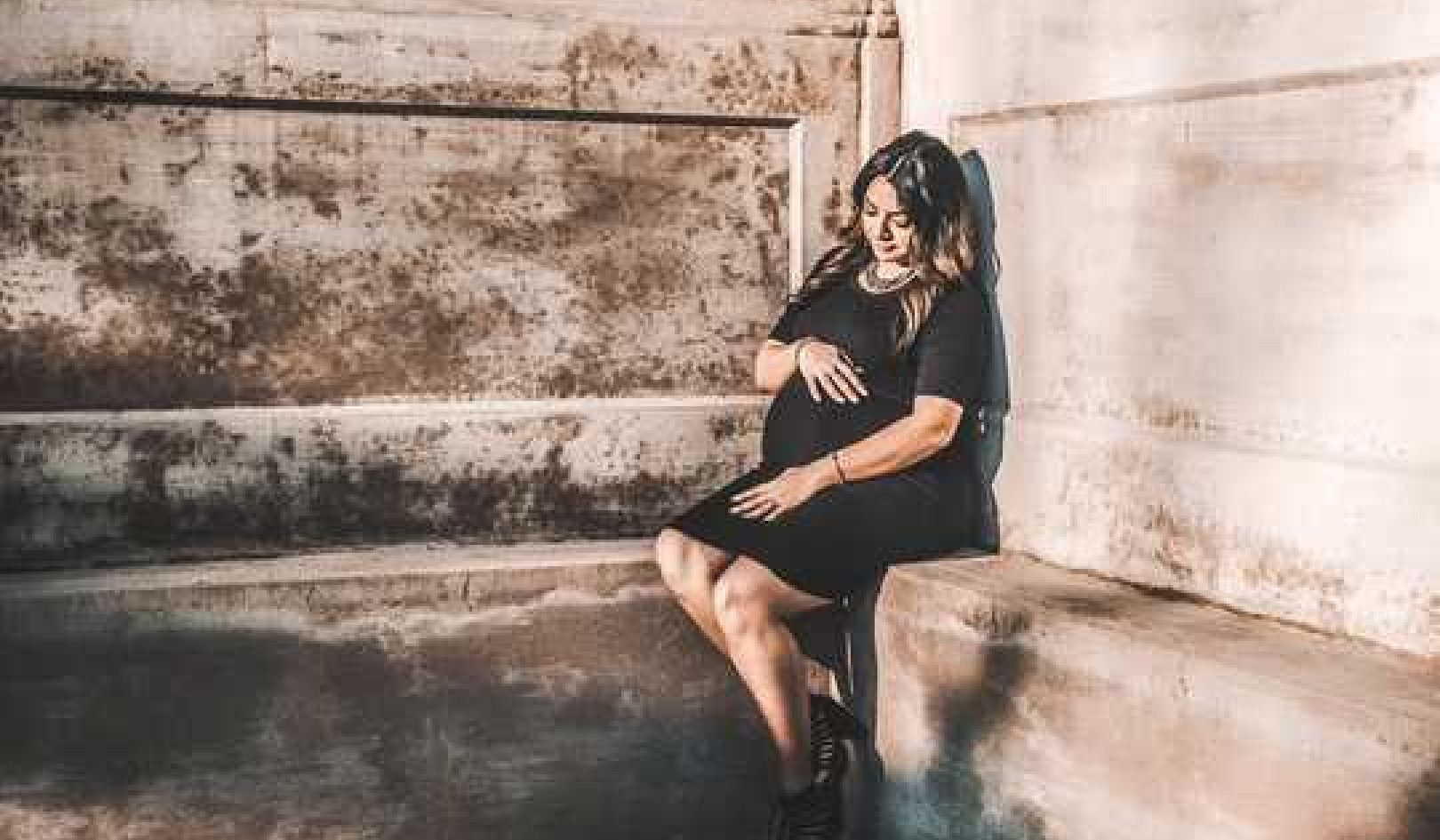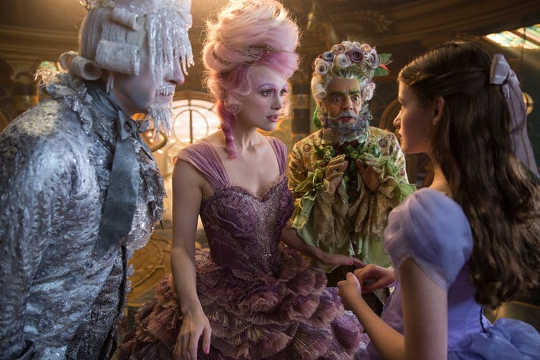
Phpto by Laurie Sparham © 2017 Disney Enterprises, Inc.
Disney’s latest offering, Nutcracker and the Four Realms comes with a warning for anyone who might imagine lighthearted, singing, dancing holiday entertainment. “The legend you know has a dark side.”. So be warned.
The film opens on a sombre note: the Stahlberg children face “their first Christmas without their mother”, It’s a curious twist, introduced presumably by the movie’s script writers, which appears neither in the original fairy tale by E.T.A. Hoffmann nor Tchaikovsky’s famous ballet, both of which inspired the film.
As if being losing her mother is not enough, heroine Clara Stahlberg soon faces a whole range of spooky creatures – including a wonderfully creepy Helen Mirren as Mother Ginger – bent on destroying the magical realms her late mother created.
It is a long way away from such Disney classics as The Little Mermaid (1989), which turned Hans Christian Andersen’s complex and often grim fairy tale into a cheerful children’s story with a romantic happy ending.
But this change of tone is right on trend. For the past decade or so, cinema has increasingly transformed well-known children’s stories into chilling adult fantasies. Terry Gilliam’s 2005 film The Brothers Grimm, for example, explored the dark reality and sometimes horror behind the familiar stories.
{youtube}https://youtu.be/Lcxfn6oFD4U{/youtube}
More recently, Snow White and the Huntsman (2012) and its follow up The Huntsman: Winter’s War (2016) aim to draw on the popularity of action-fantasies such as The Lord of the Rings (2001-3) and the epic TV drama Game of Thrones (2011-19). Hansel & Gretel: Witch Hunters (2013) reimagines the eponymous lost children of Grimm’s original tale as gun slinging professional killers. A review in USA Today warned parents not “make the mistake of taking the kids to this blood-spattered revenge-fest”.
We’re seeing the same sort of thing on television, too. Netflix’ latest release, The Chilling Adventures of Sabrina(2018), reimagines the popular 1990s sitcom, starring Melissa Joan Hart as the teenage witch, as “something a lot darker and scarier”. Rather than being concerned with the usual teenage romances and quick spells to help with make up and home work, the new Sabrina has to face satanic cults and evil forces that threaten mankind.
Dreams and fears
But what is behind this focus on the darker side of fairy tales? If looking closely at the core of most of these stories, we realise that they almost always have a rather dark core, where people are eaten, maimed or tortured.
In Grimm’s version of Cinderella, the ugly step sisters mutilate their feet to fit into the golden slippers, while the evil queen in Snow White is forced to dance herself to death in red-hot shoes. Yet, for a long time, cinematic representations of these stories tended to eschew the scarier bit and firmly focused on the happily ever after.
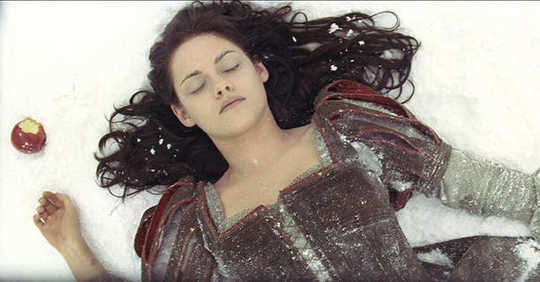
Fairy tale tinged with horror: Kristen Stewart in Snow White and the Huntsman. © 2012 - Universal Pictures
In his book, The Enchanted Screen: The Unknown History of Fairy-Tale Films, Jack Zipes, a well-known scholar and translator of fairy tales, suggests that for most children nowadays film adaptations of fairy tales “have become better known than the classical texts, which, in comparison, have virtually lost their meaning due to the fact that the films have replaced them”. Zipes suggests that this is especially true for the dark and complex fairy tales told by writers such as Andersen. It was a generation of fairy tales that expressed people’s darkest thoughts and fears, at a time when almost constant war, conflict and incurable illnesses plagued Europe.
Psychological studies on fairy tales have sometimes drawn a distinction between myth and fairy tale – noting that one has a tragic and one has a happy ending. But this generates problems with stories such as Andersen’s Little Match Girl or The Steadfast Tin Soldier, both of which have a sad and tragic ending (spoiler: the match girl freezes to death while the tin soldier melts down in a stove).
These fairy tales lack the final consolation that J.R.R. Tolkien called “eucatastrophe” – or sudden happy ending – in his influential 1939 essay On Fairy-Stories. Many of the recent cinematic retellings of classic fairy tales blur the already shaky boundaries between myth and magic. This is illustrated nicely in “The Nutcracker and the Four Realms”, which turns the ballet’s fight between the Mouse King and the gingerbread soldiers into an epic battle for the survival of the magical kingdoms.
Growing up Grimm
Fairy tales are also often considered to reflect the challenges of growing up. If this is the case, then maybe these confusing modern takes reflect the challenges faced by contemporary children and young adults? The new Sabrina (Kiernan Shipka) has been described as “woke” and a “feminist icon”, Hansel and Gretel turn their childhood trauma into a profession by becoming witch hunters for hire and for Clara in Disney’s new film, her grief for her newly deceased mother is processed through fighting a battle defending the realm her late mother created.
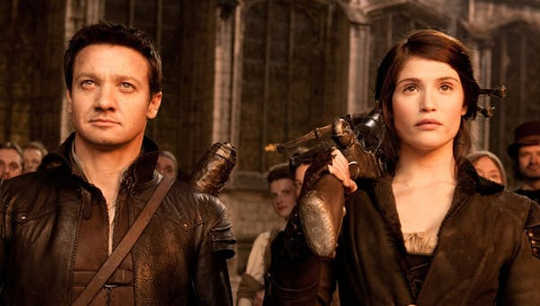
Jeremy Renner and Gemma Arterton as Hansel and Gretel. © 2013 - Paramount Pictures
As growing up becomes more complex, so do family units, external challenges and relationships between characters.
Oral traditions of storytelling have always adapted myths and fairy tales to their respective times and places. The recent focus on the dark, confusing and threatening aspects of those stories no doubt reflects the challenges of our times. But not all is lost. Even this newer, darker and more epic retelling of The Nutcracker maintains the element of hope, happiness and Christmas cheer and so still has the power to enchant and console.![]()
About The Author
Sylvie Magerstaedt, Principal Lecturer in Media Cultures, University of Hertfordshire
This article is republished from The Conversation under a Creative Commons license. Read the original article.
Books by this Author
at InnerSelf Market and Amazon





















